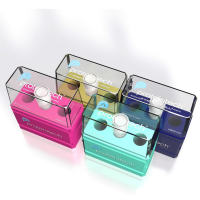Purification of Extrahepatic Cytochromes P450
互联网
384
Identtfication of the cytochrome P450 profiles in extrahepatic tissues such as the brain, breast, and prostate is a prerequisite for evaluation of the role of these enzymes in in situ activation of procarcinogens and tissue-specific metabolism of hormones and pharmaceuticals. The main difficulty encountered in such efforts is the low level of cytochrome P450 in these tissues. Normally, in tissues where cytochromes P450 are abundant, then presence can be detected in microsomal fractions by carbon monoxide (CO) difference spectrophotometry (1 ) (see Chapter 3) and by Western blotting (see Chapter 43). The limit of spectrophotometric detection is 10 pmol P450/mL. In tissues where the amount is low (l–10 pmol/mg microsomal protein), problems of turbidity and interfering chromophores make it impossible to quantify cytochrome P450 by CO difference spectrophotometry. With Western blots, the limit of sensitrvity for detection of an individual form of cytochrome P450 is 0.5 pmol/lane. In the case of tissues in which the cytochrome P450 content is as low as 1 pmol/mg, even if all of the cytochrome P450 were a single form, it would be necessary to load 0.5 mg microsomal protein per lane in order to detect it. Such high concentrations of protein usually result in a vaery poor signal-to-noise ratio on Western blots.








